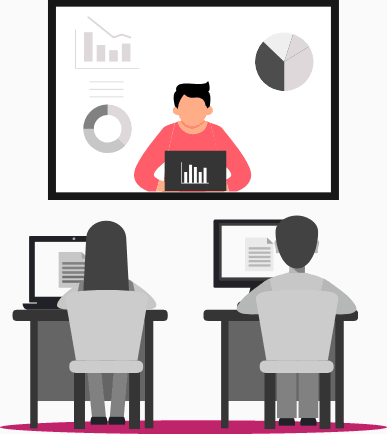What is the Blockchain Technology?
Blockchain is a technology that supports online transactions/information sharing. It can be referred to as a diary or a spreadsheet that contains the record of transactions. Each block directs to its previous block.
It is a decentralized technology with no central controlling unit. Everyone can access the information but cannot manipulate it due to extreme security in blockchain.
Every user shares equal authority and can only read the information. Each transaction generates a hash code that uplifts the network security.
Blockchain is widely used in digital transactions and cryptocurrency transfers in present times. It is also used for other things which include record maintenance.
Let us see some blockchain project ideas for beginner/student in 2020 in this article.
Identification of copied brands
Every successful brand has an imposter available in the market. These fake suppliers use the name of the brand and sell their goods/commodities. This leads to confusion and distrust among consumers.
Every original manufacturer has a barcode imprinted on its product label. This barcode is unique and can be scanned by anyone to check the originality of the product.
This information can be connected to blockchain technology.
One can develop an application for smartphones that could do the aforementioned work. Previous works are done in this field but still, a lot of fake brands are available in the market. There is a lot of scopes to increase accuracy in this field. It can be a brilliant project idea.
Web hosting
You can host through the web using blockchain where the authority is decentralized. If you are building a centralized server then the maintenance cost will go high and it can encounter traffic issues from time to time. One can distribute the services all over the web and can link it back as and when required using the blockchain registry. This will reduce the traffic and maintenance cost.
Supply Chain Management (SCM)
SCM contains all the processes of a raw material being converted to finished goods. It handles the supply side of any product/service and monitors the flow/storage of goods/services. with the usage of blockchain, we can easily detect the chronology of ownership of the product from being a raw material until the end consumer.
The transparent and traceable nature of blockchain will help in such tasks. The licensing of products/services can be done easily using blockchain. The cost will be cut down and security will increase. This project can bring a revolution in SCM.
Insurance Sector
Sometimes a lot of time is taken to process the documents before allowing the insurance. This can be done through blockchain and the documents and reports can be accessed quickly by the insurers which will ultimately decrease the time of insured money which is reaching its destination. The traceability of blockchain will help in this process. People can understand the cost risks easily and it will also help insurers in cutting down the cost.
E-voting
A lot of E-voting campaigns have been carried out already. People still don’t trust E-voting as security concerns are there. With the use of blockchain technology, we can increase security. We can also make the information transparent to the required authorities who can keep an eye on malicious activities.
It can be a far-fetched thought but if applied properly can give us a fair & secure voting system. It can cut down the cost of various polling booths that are physically made and monitored during an election.
Conclusion
Blockchain ensures the highest number of reaches through its traceable and transparent nature. The security is also managed by the hash functions generated after each block. The level of peer to peer sharing is quite high in the blockchain.
There are many blockchain online courses available on the internet to help you out. This article was all about some blockchain projects/ideas for students/beginners in 2020 which can bring a revolution in respected fields. I hope it helps!


